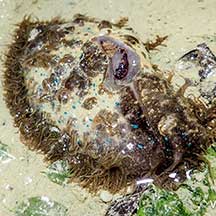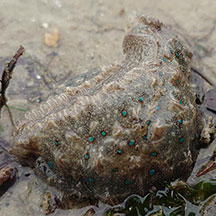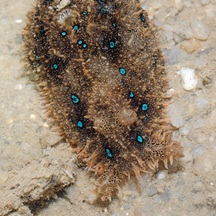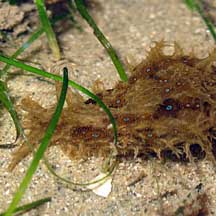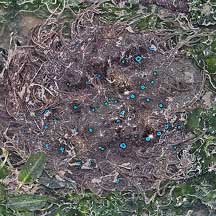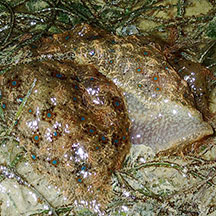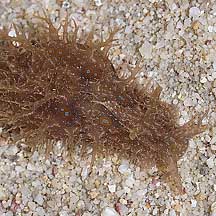 |
|
| sea hares text index | photo index |
| Phylum Mollusca > Class Gastropoda > sea slugs > Order Anaspidea |
| Hairy
sea hare Bursatella leachii Family Aplysiidae updated May 2020
Where seen? This hirsute sea hare is sometimes seen on our Northern shores among seagrasses and seaweeds. Sometimes many are seen scattered everywhere, then they are no longer seen for many months. Sometimes, several are seen gathered together, densely packed in large numbers, possibly mating? Or simply gathering around a good source of food? |
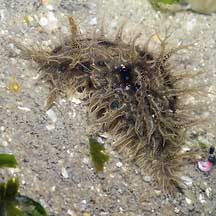 Changi, May 05 |
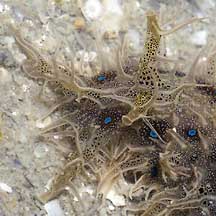 Two pairs of tubular tentacles |
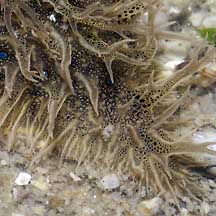 Short triangular 'tail' edged with white bars. |
| Features: 6-12cm. Body long, fleshy with a short triangular tail which has white bars. It is covered with lots of flat branching finger-like projections. It has two pairs of tentacles, oral tentacles and rhinophores about the same size (you have to look carefully among the hairy bits to distinguish the tentacles). The parapodia appears to be a hole in the centre of the body, rather than 'wings' or flaps as in other large sea hares. It may come in different shades of brown, sometimes bluish, sometimes with orangey 'hairs', usually with bright blue spots which are ringed in brown. It is usually well camouflaged and blends in perfectly with among seaweeds and seagrasses. Like some other sea hares, it produces a purple ink when disturbed. |
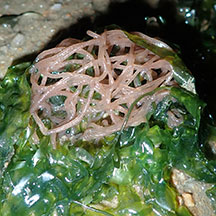 Egg mass laid by the sea hare. Pasir Ris, JUl 19 |
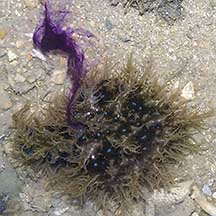 Releases purple ink when disturbed. Pulau Sekudu, May 04 |
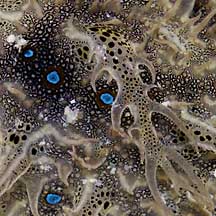 Projections flat branching, not spiny. Blue spots but no fine lines. |
| Sometimes mistaken for the Furry
sea hare which has finer 'hair' and fine parallel lines. More on how
to tell apart hairy slugs and snails. What does it eat? It eats cyanobacteria, in particular, the mat-forming Lyngbya majuscula, which was formerly known as the filamentous blue-green alga Microcoleus lyngbyaceus. Apparently, Bursatella sea hares swallow large amounts of sand in the process of eating, somewhat like earthworms do. |
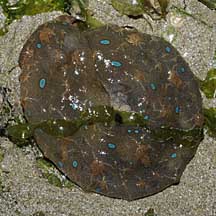 When out of water, looks like a blob. Changi, May 09 |
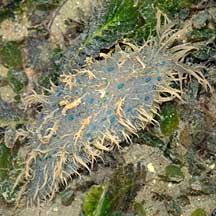 Pale ones sometimes seen. Changi, May 09 |
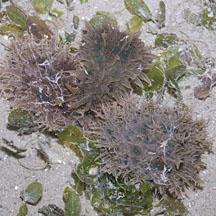 Comes in a variety of shades. Chek Jawa, Feb 07 |
| Hairy sea hares on Singapore shores |
On wildsingapore
flickr
|
| Other sightings on Singapore shores |
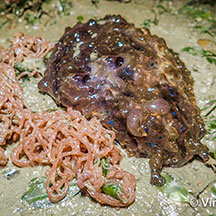 With eggs next to it. Pasir Ris Park, Sep 20 Photo shared by Vincent Choo on facebook. |
Links
|
